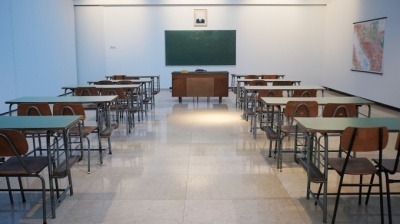Preparing for the teaching
- Learn about your learners. What do you know about them? Why do they attend this course? What are their main challenges? What might be their expectations about this course? What might be their concerns regarding this course?
- In practice it is very difficult to refrain from planning based on what I know and what I consider important. Therefore it is a good habit to permanently question oneself during the preparation phase: Why do I want to include this topic? What will the learners gain from it? How will they be able to apply this information in their lives? Why is this method the most appropriate for delivering this content? How can I make use of the participants’ experience?
- When planning the content of the course, reserve space for using information provided by the participants, e.g. instead of using previously prepared examples, create examples together with the learners during the course.
- Do not just focus on preparing the content of the course but also consider how you can take on other roles that support the participants’ learning process.
Creating a learning space
The aim is to create an environment that fosters learning and creates positive group dynamics. Aspects related to a course’s physical space are often not within the direct influence of the trainer, e.g. room temperature or design flaws in the room’s layout, however it is the trainer who will have to deal with the situation. Neither will the participants reflect too deeply about the reasons why there were problems in the teaching process – they will consciously or unconsciously hold the trainer responsible for the shortcomings. It is therefore important for the trainer to draw attention to arranging the room, check that the required equipment is available and functioning, and pay attention to other aspects that might influence the teaching.
Examples for negative physical aspects are:
- The classroom lacks air or is too cold.
- Participants are tired due to overly intense teaching or a lack of breaks.
- Layout of furniture limits communication among participants.
- Use of mobile phones disturbs the flow of learning and withdraws attention.
- Participants come and go.
- The group is too large.
Choosing a room layout that corresponds to the teaching

The traditional layout found in most classrooms does not promote active communication and engagement of the group because participants see only the backs of each other and all focus is directed towards the trainer. This setting is appropriate for “one-way communication” where the sole purpose is to present information.
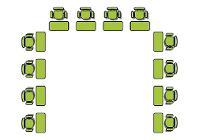
The most common alternative is the “U”, which is well suited for following a presentation and common discussions.
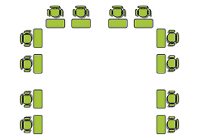
The most common alternative is the “U”, which is well suited for following a presentation and common discussions.
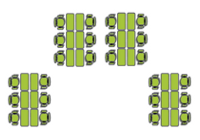
When leaving gaps between some of the tables it is easy to transform the setting from one group into subgroups, e.g. for accomplishing group work exercises.

Depending on the topic and maturity of the group, it might be appropriate to remove desks altogether and create a circle. This setting reflects and promotes openness and equality. This might not be such a good idea in new groups, where a desk can help people to create their personal space and achieve a sense of security.
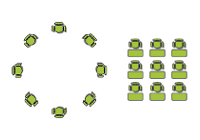
If the room is large enough, it can be a good idea to divide it into different areas or zones. For example, one part of the room can be reserved for listening and receiving input such as a lecture, while another part of the room can be reserved for group work. Likewise, parts of the room may be declared “planning zones”, in order to emphasise the need for careful planning before moving into action, while other parts of the room become “action zones”, where the groups implement their plans.
The division into two zones is especially beneficial in computer classes, where there is the additional challenge of participants being tempted to press buttons on their keyboards rather than listen to instructions.
Tip: Involving the participants in moving furniture can raise their feeling of “owning the classroom” and increase their co-responsibility for the teaching process.
Creating a warm welcome
As always, the first impression matters. Giving the participants a feeling that they are welcome and that the organisers care about them will help in getting the course off to a good start.
Ideas for creating a welcoming atmosphere:
- Signs that guide participants to the right room.
- Greeting each participant personally.
- A place for leaving coats and jackets.
- Classical music in the background.
- Agenda and handouts placed on tables so participants can start familiarising themselves with what is to come.
- Flowers in the room.
- Name tags.
Making the process and outcomes visible
By placing all produced materials, e.g. flip chart papers and learners’ group work summaries, on the wall, the teaching process becomes visible and participants see what has already been done. This also ensures that conclusions and other relevant ideas remain present. Another benefit is that the anonymous classroom is transformed into a place that is filled with thoughts and ideas that belong to this particular group of learners. If the teaching takes place over a longer period of time, outcomes of previous lessons can be placed on the wall in order to create a link to what has already been done.
In order to make processes and outcomes visible, it is not advisable to rely too much on computer or overhead projector presentations. Computers and other technical presentations are a convenient way to show information, but the drawback is that, as soon as the slide is switched, the information is no longer present.
Making sure you have what you need
The trainer should not rely on all required equipment being available in the classroom. Chances are great that a key piece of equipment will be missing or not working. Experience shows that this can happen anywhere. One option is, of course, to bring along everything yourself. The other option is good communication with the organisers regarding the facilities and equipment.

